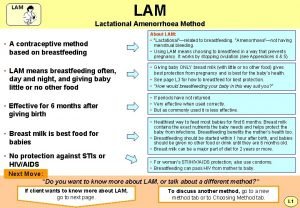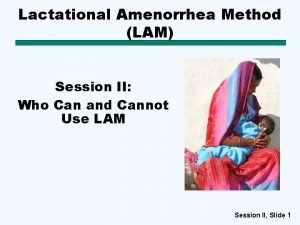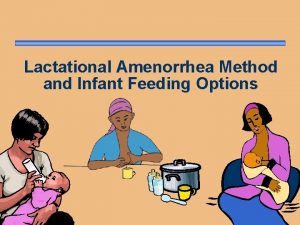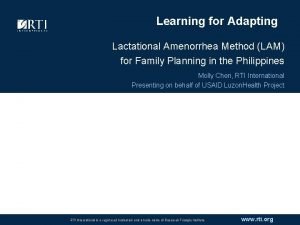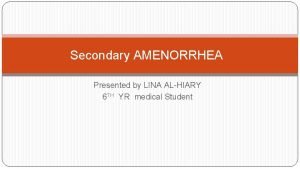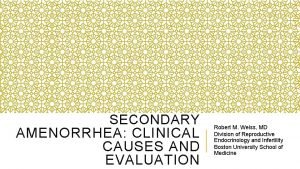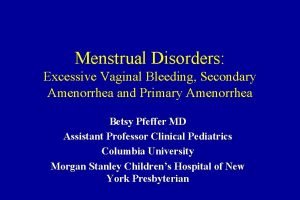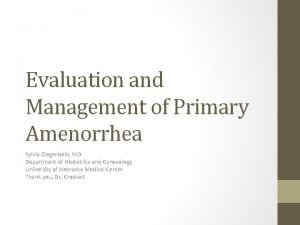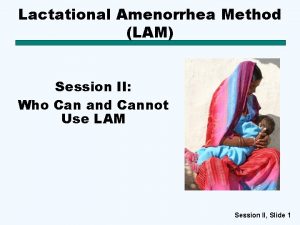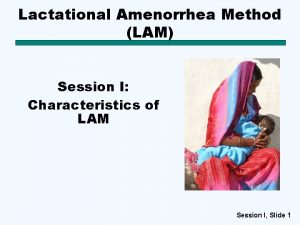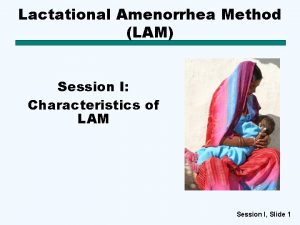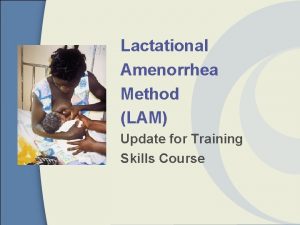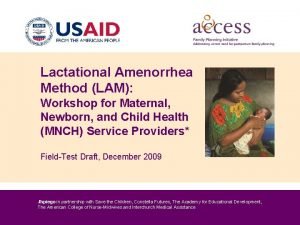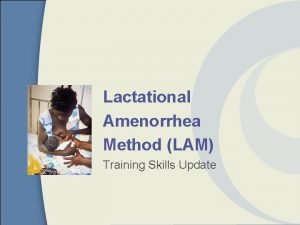Lactational Amenorrhea Method LAM Session II Who Can









- Slides: 9

Lactational Amenorrhea Method (LAM) Session II: Who Can and Cannot Use LAM Session II, Slide 1

LAM Eligibility Criteria 1. The woman’s menstrual bleeding has not returned; AND 2. She fully or nearly fully breastfeeds her baby; AND 3. The baby is less than six months old. Session II, Slide 2

Importance of LAM Criteria (1) 1. The woman’s menstrual bleeding has not returned (“amenorrhea”) Menstrual bleeding signals return of fertility—the woman can become pregnant again. Remember: bleeding before two months postpartum is NOT considered menstruation. Session II, Slide 3

Importance of LAM Criteria (2) 2. She fully or nearly fully breastfeeds her baby If baby receives food or liquids other than breast milk: • The baby becomes full and will not want the breast as often. • Infrequent suckling will cause the mother to produce less and her fertility to return • She can become pregnant again. Session II, Slide 4

Importance of LAM Criteria (3) 3. The baby is less than six months old. Six months is a biologically appropriate cutoff point to start supplemental foods. Remember: continue to breastfeed beyond LAM and until baby is two years old. Session II, Slide 5

Medical Eligibility Criteria What are medical eligibility criteria? Define the categories. Review the job aid. Session II, Slide 6

WHO’s Medical Eligibility Criteria with Clinical Judgment Category Description With clinical judgment 1 No restriction for use Use the method under any circumstances 2 Benefits generally outweigh Generally use the method risks 3 Risks usually outweigh benefits Use of method not usually recommended, unless other methods are not available/acceptable 4 Unacceptable health risk Method not to be used Source: WHO, 2010. Session II, Slide 7

WHO’s Medical Eligibility Criteria in Settings Where Clinical Judgment is Limited Category When clinical judgment is limited 1 Use the method 2 3 Do not use the method 4 Source: WHO, 2010. Session II, Slide 8

Category 1 Who Can Start LAM is safe for nearly all women. WHO Category Conditions Category 1 All conditions listed in MEC fall into category 1 for LAM Source: WHO, 2010. Session II, Slide 9
